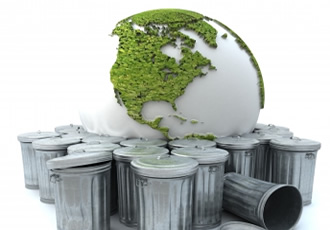
Environmental pollution is believed to be a major factor in the rise of hormone imbalance
Most people are aware that we have been polluting our environment for many years and upsetting the balance of nature. However, there are not too many who realize that a great deal of the pollution consists of substances that are – or can become – xenoestrogens.
Xenoestrogens are chemicals which have the characteristic of behaving like oestrogens and attaching themselves to oestrogen receptors. The fact that they are now so wide-spread in the environment is because they are the breakdown products of many processes involved in the petrochemical and plastics industries.
They are even exuded from plastics (for example furniture, carpets, underlay, some paints and plastic water bottles), especially if they are warmed in any way.
These xenoestrogens attach themselves to oestrogen receptors in the body and produce stronger effects than oestrogen itself. They are also difficult for the body to remove from the receptors, so they stay in the body and have prolonged effects.
This is unlike phytoestrogens (oestrogens found in plants), which also attach to the body’s oestrogen receptors but seem to have weaker effects than oestrogen.
The environment is further polluted by the passing of oestrogens into the water supply. These come from women who are taking the contraceptive pill and HRT.
We are told that these are removed from our drinking water when it is recycled, but many experts doubt that this is completely possible.
Article extracted from the book:
Natural Progesterone - The natural way to alleviate symptoms of menopause, PMS, endometriosis and other hormone-related problems By Dame Dr Shirley Bond & AnnA Rushton
© Wellsprings
www.wellsprings-health.com
All information given on this site is for general interest only. Every woman is unique. Your results may vary.
Disclaimer: This article is intended to educate readers about Natural Progesterone and/or other Wellsprings products. For medical advice you should always talk to a healthcare professional.

























